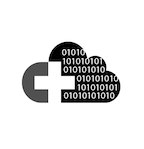 The volume of patient data available to medical institutions —concerning everything from treatment and family health histories to allergies—is increasing exponentially.
The volume of patient data available to medical institutions —concerning everything from treatment and family health histories to allergies—is increasing exponentially.
While this disparate information could help inform doctors in making optimal treatment decisions, organizing it into a coherent and usable form is more difficult than ever, says Rai Winslow, the Raj and Neera Singh Professor of biomedical engineering and director of the Institute for Computational Medicine.
“If we are to deploy best practices, such as holistic care and machine learning, we need to store and organize patient data into a coherent, easily interpreted database,” he says.
Winslow and Stephen Granite, a researcher in Winslow’s lab, have developed a technology that uses the Kafka processing platform to take minute-to-minute data from a commercially available vital signs monitor and organize it into time-series data that can be combined with data from other sources. “It is a powerful platform for storing and organizing physiological data that offers unparalleled speed and flexibility,” says Winslow.
This technology, now integrated into the Johns Hopkins Precision Medicine Analytic Platform, is being used to collect vital signs data areawide across Johns Hopkins hospitals.




